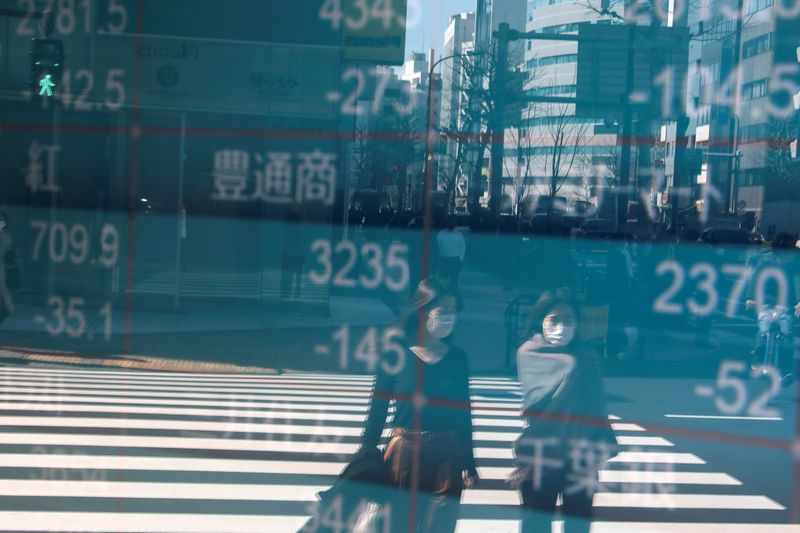This post was originally published on this site
https://i-invdn-com.akamaized.net/trkd-images/LYNXMPEG2400I_L.jpg
By Wayne Cole
SYDNEY (Reuters) – Asian shares were looking to rally for a fourth straight session on Thursday as U.S. markets swung sharply higher and another dose of central bank stimulus offered some salve for the global economic outlook.
Wall Street seemed to find relief in the strong performance of former Vice President Biden in the Democratic nomination campaign. Biden is considered less likely to raise taxes and impose new regulations than rival Bernie Sanders.
The U.S. House of Representatives also approved an $8.3 billion funding bill to combat the spread of the virus, sending the emergency legislation to the Senate.
In another wild swing the Dow () surged 4.53%, while the S&P 500 () gained 4.22% and the Nasdaq () 3.85%.
Asian markets followed, if a little more cautiously. MSCI’s broadest index of Asia-Pacific shares outside Japan () added 0.2%, in its fourth day of gains.
Japan’s Nikkei () rose 0.8% and hard-hit Australian shares finally managed a bounce of 1.6%. E-Mini futures for the S&P 500 () dipped 0.4% after its overnight jump.
That was not to say the coronavirus news had got any brighter, with mounting deaths across the globe, Italy closing all of its schools and airlines cutting more flights.
“There is little doubt that the covid-19 outbreak will slow global growth considerably this quarter, and we expect it to actually produce a rare non-recessionary contraction in GDP,” said JPMorgan (NYSE:) economist Joseph Lupton.
He noted the bank’s all-industry PMI measure of activity for February slumped 6.1 points, the largest one-month drop on record, and at 46.1 was at the lowest since May 2009.
The Federal Reserve and Bank of Canada had both responded by cutting interest rates by 50 basis points, and markets in the euro zone are pricing in a 90% chance that the ECB will cut its deposit rate, now minus 0.50%, by 10 basis points next week.
Yet, as policymakers grapple with the best strategy to avoid a global recession, some major central bank have been less keen to follow suit.
In the end, monetary policy was not a cure for the disease and the impact was likely to get worse before it got better.
“As we test more folks for COVID-19 in the United States, the case loads will rise and perhaps exponentially. So in the short term, risk assets obviously remain beholden to COVID-19 headlines,” Tom Porcelli, chief U.S. economist at RBC Capital Markets.
“We have to get past the threshold where COVID-19 shifts from panic to headline exhaustion and subsequent news on it becomes more and more of a fade,” he added. “Then risk assets can move higher in earnest.”
HEALTHY, FOR NOW
At least the U.S. economy was in healthy shape to face the risks, with services sector activity jumping to a one-year high in February, while private payrolls gained 183,000.
The better data combined with the rally in stocks to nudge 10-year Treasury yields () up from all-time lows under 1% to reach 1.05%. Yields had fallen for 10 straight days, the longest slide in at least a generation.
That move gave the dollar a modest lift, with the euro dipping back to $1.1131 () from a two-month high of $1.1212 hit earlier in the week.
The dollar also inched up to 107.57 yen , from a five-month trough of 106.84, while the firmed to 97.389 ().
Gold steadied after jumping in the wake of the Fed’s rate cut, and was last at $1,637.13 per ounce .
Crude oil prices were mixed as major oil producers, including Saudi Arabia, tried to bring Russia on board for deeper supply cuts to try to offset a slump in demand.
Brent crude () futures were off 16 cents at $51.70 a barrel, while U.S. crude () added 55 cents to $47.33.

